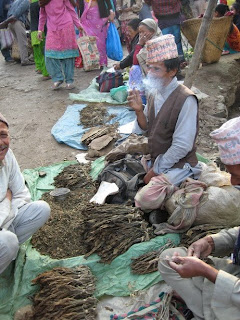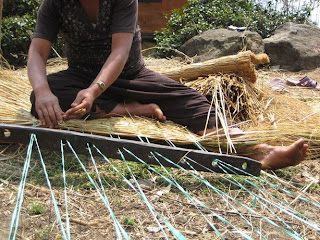Spent a morning collecting "yangben" (Limbu), "Jhyau" (Nepali), a mossy epiphyte that grows high up on rotting branches.








(added info below due to comment)
[Extract from fieldnotes]
The hanging epiphyte has to be sorted out. Moss and other plants have to be removed. And bits of bark and such. Enough for one family to eat a meal of takes about 1.5 hrs to sort out. And there is still a large amount left. We must have picked a total of over 1 kg, which uncompressed filled up a large rice sack to 3/4.
The weed is then boiled with ash. About a few tablespoons of ash from the fire. The liquid is brought to a boil for about 20 minutes, until the plant has gone black (from red/grey/brown), and the water has turned dark red.
It then is washed, though apparently either we didn't boil it long enough or S didn't wash it properly, because after washing it well, through and through, the stuff is fried with butter (that surge got from T-Sir in exchange for work), chillies and chives (which they just call garlic here). Salt is added a little later and the stuff is stir fried for 10 minutes or so total, and covered for a moment. We eat it adding a little more salt, with fairly sour jaaD (chaaneko)[millet beer].
It is not too pleasant to eat, though buddharaj claims that in bazaar areas people pay 35 rupees for a plate of the stuff, and 30 for meat. It is extremely, well...fairly bitter. They all agree that it was not prepared properly.























































